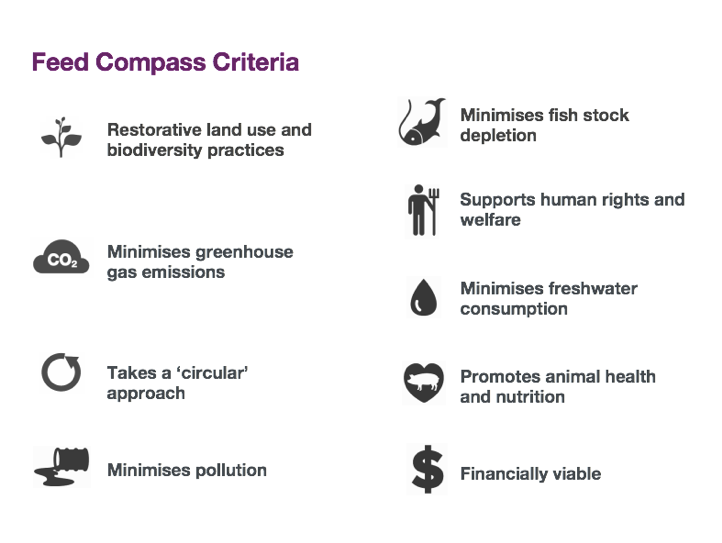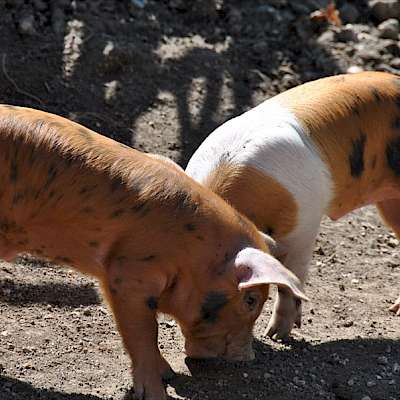In collaboration with Forum for the Future, Eating Better recently hosted a roundtable: Transforming The Way Livestock Are Fed which brought together organisations working to address this hidden part of the food system.
Transforming the way we feed farm animals is critical to achieving more sustainable food systems. With the world population projected to reach nine billion by 2040, protein demand is set to rise to levels that cannot be sustained by the existing food system – and, in particular, by the way we currently feed animals. Nearly half of global agricultural land is used for livestock feed production, more than a fifth of wild caught fish is fed to animals and the vast majority of global soy production is used in animal feed, mainly for poultry and pigs. Feed contributes to 45% of greenhouse gas emissions from livestock production, and much of it comprises high-value foods rich in nutrition, such as soy and maize. Feed production, such as soy, often has devastating impacts on ecosystems, communities and food security particularly in Latin America.
Simon Billing of Forum for the Future highlighted three barriers to change:
-
- There is no method of comparing how sustainable different types of feed are, across environmental, economic and social criteria;
- Low public awareness of feed sustainability issues means that demand for sustainable feed solutions is low;
- New feed ingredients are often more expensive than mainstream feedstuffs.
Forum for the Future have developed the Protein Challenge 2040 to consider how scaling up sustainable feed innovation can sustainably meet demand for animal protein. Simon highlighted the important role of food retailers and the food service sector as key to developing sustainable feed supply chains. Forum’s Feed Compass Criteria set out nine principles for sustainable animal feed.

Martin Bowman from Feedback’s The Pig Idea is campaigning to allow safely treated food waste to be fed to pigs as already happens in Japan. If EU authorised heat treated surplus food was fed to pigs, at rates similar to Japan, then 40% of all food waste could be recycled, which would reduce the land used for feed production by 21%.
Around the world campaign organisations are shining a spotlight on the devastating consequences of modern industrial livestock production – and the feed required to underpin intensive livestock production is now becoming a focus. For example, Mighty Earth’s Avoidable Crisis campaign is raising awareness of the tragedy of deforestation and human rights abuse behind much Latin American soy production that is exported to Europe. The environmental impact of deforestation for soy planting is illustrated to startling effect in this video about the Rio Nuevo in Argentina.
While awareness is growing and innovation towards alternative animal feed sources providing practical solutions, there is a gap in policy responses to these challenges. The UK Government’s recent consultation on its proposals for future of farming post Brexit, Health and Harmony, fails to address the impact we are having overseas from UK animal feed production. Meanwhile France is leading the way in announcing a new five year climate plan to end ‘imported deforestation’ of products like soy. And the European Commission is considering the development of a European Protein Plan, aimed to increase European grown protein sources.
Eating Better is raising awareness of the hidden impacts of our meat and dairy consumption including the impacts of animal feed. We recommend a ‘less and better’ approach to meat and dairy consumption. As our recent report: Principles for Eating Meat and Dairy More Sustainably: the 'less and better' approach identifies a shift away from intensive production to a ‘livestock on left-overs’ approach would see lower levels of production and consumption, with animals reared in foraging systems or fed on crop by-products and food waste/surplus. Ruminants can be kept on grasslands where this brings additional benefits.
